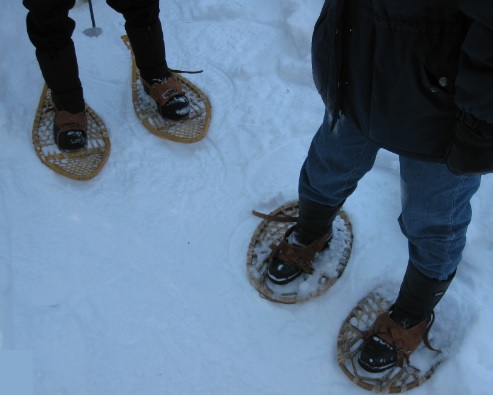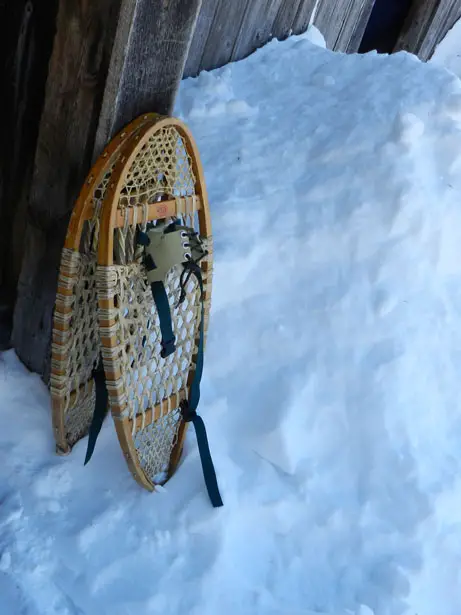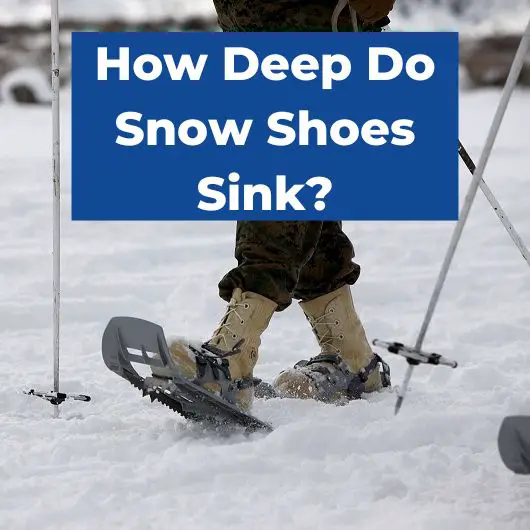Are you planning to go snowshoeing this winter? One of the most important things to consider when snowshoeing is how deep your snowshoes will sink. If you sink too deep, it can be difficult to walk, and you may risk getting stuck in the snow. So how deep do snow shoes sink?
Snowshoes can sink up to 6 to 12 inches. You may not sink at all on a well-packed trail, and you could sink only 6 to 8 inches in snow that is lightly packed.
This can vary depending on several factors such as snow density, snow age, your weight, and more. Understanding these factors can help you choose the right snowshoes and prepare for your winter adventure.
How Far Should Snowshoes Sink?
It’s important to understand how deep you should sink in the snow when snowshoeing. The depth of sinking depends on several factors, such as snow density and the wetness of the snow. Generally, you can expect to sink between 6 to 8 inches in depth, but it could be less or more depending on the conditions, which we’ll cover further below.
What Is Snowshoe Flotation?
The reason why snowshoes help you stay afloat on the snow is due to their design. Snowshoes are designed to spread out the weight of the snowshoer, which makes it easier to walk on snow with less effort. The larger the snowshoe, the more flotation it provides, which means you’ll sink less in the snow.
However, it’s important to note that you’ll always sink a bit with snowshoes, especially in powder. In this case, a larger snowshoe with more flotation may help, but it won’t completely prevent sinking..
How Snowshoes Work

Snowshoes are designed to help people walk on top of the snow without sinking. They work by providing a larger surface area than the bottom of a regular shoe or boot. The larger surface area helps distribute the weight of the person over a wider area, reducing the pressure on the snow and preventing your footwear from going deeper in the snow.
Most snowshoes have a frame made of lightweight materials like aluminum or plastic, and a webbing or decking made of durable materials like nylon or neoprene. The decking is what makes contact with the snow, and the frame provides support and structure.
The webbing or decking of the snowshoe is typically made of a material that is flexible and can conform to the shape of the snow, while also providing enough rigidity to support the weight of the person. The decking also has a textured surface that helps provide traction and prevent slipping on icy or uneven surfaces.
Factors Affecting Snowshoe Sinking Depth

Snow Conditions
The depth of snowshoe sinking depends on the type of snow you’re traveling on. Fresh powdery snow will usually allow for more sinking than hard-packed, icy snow. This is because the powdery snow will give way more easily and allow your snowshoes to sink deeper, while the hard-packed snow will cause your snowshoes to stay on top.
Body Weight
One of the main factors that will affect how deep snowshoes sink into soft snow is the weight of the user. A heavier person will sink deeper into the snow than a lighter person, due to the greater amount of weight that is being distributed over a smaller surface area. Therefore, if you are planning to go snowshoeing, it is important to take your weight into account when choosing the right snowshoes for you.
Snowshoe Design
The design of your snowshoes will also affect how deep snow shoes will sink. A larger snowshoe will distribute weight over a larger surface area, which will reduce the depth at which it sinks into the snow. Additionally, snowshoes with a more aggressive crampon design will provide better traction on hard-packed snow, reducing the amount of sinking that occurs.
Overall, the depth of snowshoe sinking depends on a variety of factors, including snow conditions, body weight, and snowshoe design. Understanding these factors can help you choose the right snowshoes for your needs and ensure a safe and enjoyable snowshoeing experience.
How to Measure Snowshoe Sinking Depth
Tools Needed
Before you can measure the how deep do snow shoes sink, you will need the following tools:
- A ruler or measuring tape
- A pair of snowshoes
- A snow-filled area to test the snowshoes
Steps to Follow
Follow these steps to measure the sinking depth of your snowshoes:
- Find an area with enough snow to test your snowshoes.
- Put on your snowshoes and walk through the snow for a few steps. Make sure you walk in a straight line.
- Take off your snowshoes and measure the depth of the snow where you were walking using a ruler or measuring tape. Measure from the top of the snow to the ground level.
- Subtract the depth of the snow where you were walking from the height of your snowshoes. This will give you the sinking depth of your snowshoes.
- Repeat the process in different areas with varying snow conditions to get an average sinking depth of your snowshoes.
It is important to note that the sinking depth of your snowshoes will vary depending on the type of snow and your weight. Fresh, powdery snow will be more forgiving and cause less sinking compared to hard-packed, icy snow. Additionally, heavier individuals will sink deeper than lighter individuals with the same snowshoes.
Tips for Preventing Deep Snowshoe Sinking
Equipment to Carry
Carrying the right equipment can make a big difference in preventing deep snowshoe sinking. Here are some items to consider bringing with you:
- Snowshoes with sufficient surface area for your weight and the snow conditions
- Trekking poles to help distribute your weight and provide balance
- Gaiters to keep snow out of your boots and pants
- Avalanche beacon, probe, and shovel if you’re traveling in avalanche terrain
Techniques to Use
Using proper techniques can also help prevent deep snowshoe sinking. Here are some tips:
- Stay on packed trails or make your own trail in fresh snow to avoid deep, unconsolidated snow
- Walk with a wider stance to distribute your weight over a larger area
- Lean slightly back to keep the tails of your snowshoes from sinking too deeply
- Use a kick-step technique to create steps in the snow and prevent sinking
- Take shorter steps to avoid sinking too deeply
- Use a herringbone technique to climb steep slopes, which involves angling your snowshoes outward and stepping up diagonally
By carrying the right equipment and using proper techniques, you can prevent deep snowshoe sinking and enjoy your winter adventures with confidence.

